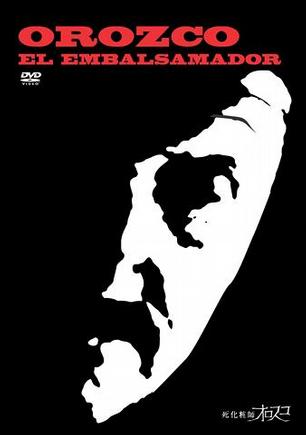| 剧情介绍 |
Documented between 1996 and 2001 by pinku eiga director/professional corpse photographer Tsurisaki Kiyotaka, Orozco The Embalmer is a unflinching ninety minute documentary that explores the work of former police inspector turned embalmer, Froilan Orozco. A middle aged man suffering from some health problems, Orozco claims to have embalmed thousands of bodies, an average of five per day going under his knife. Based in El Cartucho, a small part of Bogota, Columbia which is rampant with violent crime and drug abuse, Orozco works at a small, run down funeral home right across the road from the local medical center, he’s never in need of work and seems to have a constant stream of corpses to deal with.
There isn’t really a plot to discuss, the film is a simple collection of vignettes showing Orozco at work with some clips spliced in that show what the neighborhood he works in is like. Tsurisaki’s camera, unsurprisingly, leaves nothing to the imagination and none of what you see in this documentary is faked. Corpses are cut open quickly, their innards removed, their torsos cleaned out and chemically treated. At one point a face is pulled back from the skull and the cranial cavity stuffed with paper to help slow down decomposition. The skin that makes up the face is then pulled back into place, the body is literally tossed into a coffin, make up then applied as some sort of last touch.
As Orozco goes about his work it’s easy to see how jaded he is. A man literally surrounded by death, he talks openly and nonchalantly to anyone who comes into his embalming room, even going so far as to ask one girl out. This is very much just a job to him, he doesn’t really seem to feel much for his victims, though at one point when the corpse of an infant is brought in you can’t really tell if he’s referring to the deceased child as ‘a little shit’ because of disdain or out of duress. Orozco goes about his business with almost ruthless efficiency, cutting and cleaning as quickly as a butcher would dress a cow for display in his shop window. As such, he’s developed a reputation as one of the best in the business, at least regionally. As the film plays out, we meet his assistant and also some of the competition, all of whom have their own odd personality quirks and traits.
Tsurisaki shoots the film exploitatively, capturing the removed organs in close up and making sure that the deceased subjects genitals are easy to see and sometimes right up front in the shot. The film is quite shocking and bound to upset sensitive viewers, but at the same times it’s a very powerful picture. It’s as much a personality piece, if not more, than it is a collection of corpse footage but there’s little doubt that the film will be remembered as a character study before it’ll be remembered for its shock value. Nothing is hidden from the viewer, there are no clever editing tricks here to hide the more unsettling visuals from the lens. The cinematography is as blunt as Orozco’s delivery, and while the film, obviously made on a low budget and with limited means, is rough around the edges despite its flaws it offers fascinatingly grim insight into the realities of the death ritual.【查看更多】
|
